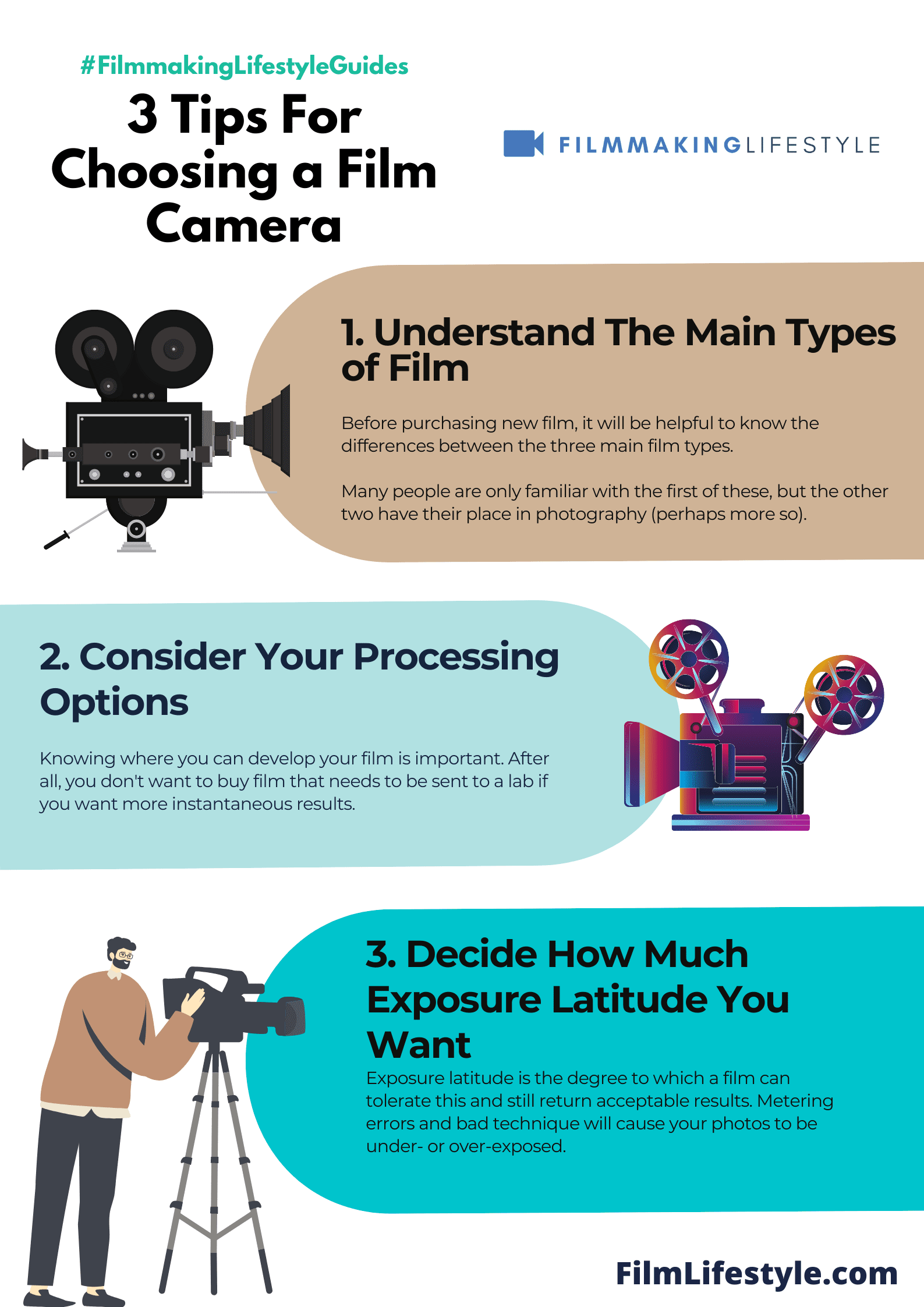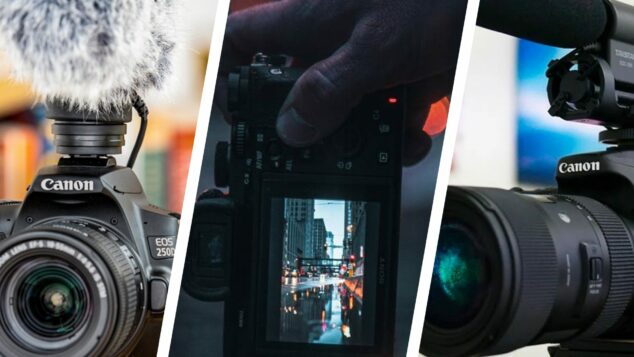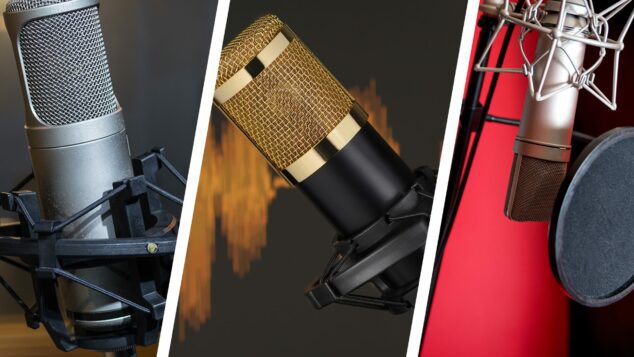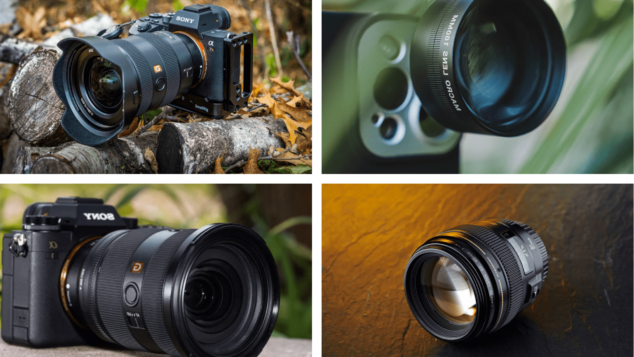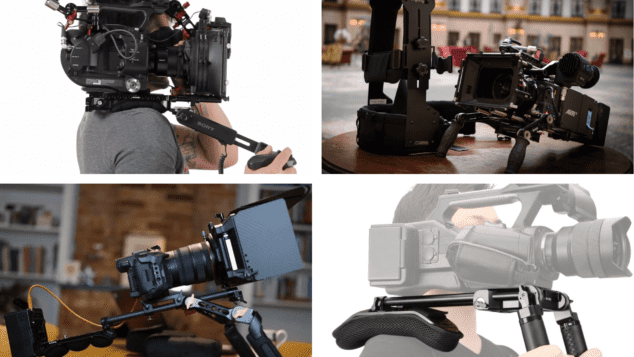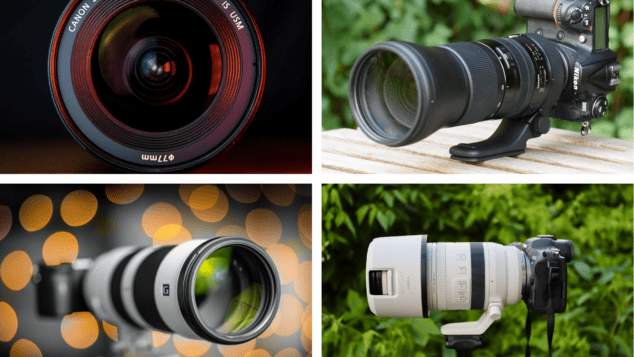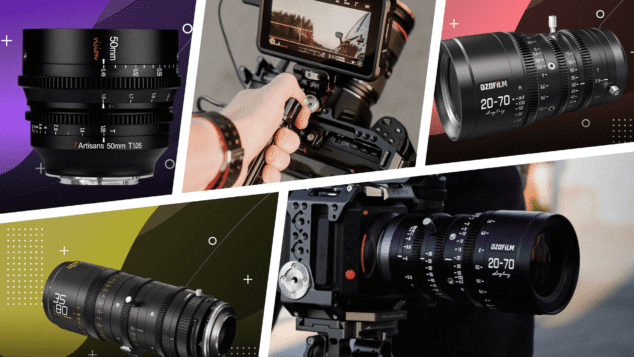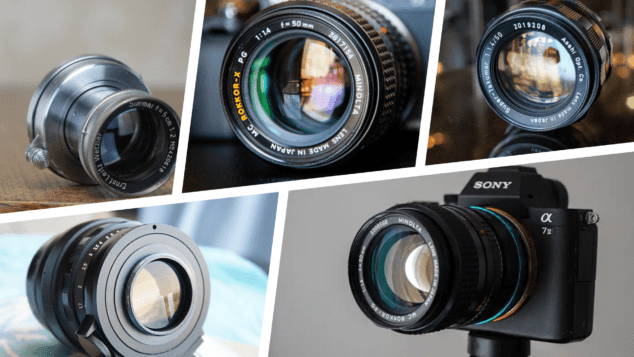If you’re a film photographer who is looking for the best camera to use, then this article will help. We compiled a list of some of the top-rated cameras on the market today and provide reviews from other photographers to help make your decision easier.
There are many different types of film cameras on the market, each with a number of features that make them stand out from one another.
We’ll also cover pros and cons to help you find the best camera for your needs. The first question to ask is whether or not you’re looking for an SLR or rangefinder camera?
The next important thing to consider is how much money you want to spend on your new purchase! If you have any questions about these topics, don’t hesitate to leave us a comment below.
For example, do you want live streaming capabilities or not, and what kind of quality can you afford? These are just two examples of questions that may be on your mind if you’re thinking about buying a new film camera.
This guide will help break down some of the most popular types of film cameras and hopefully it’ll make the decision easier for those who have been struggling with which one to buy!
Best Film Cameras
Let’s jump right into our list of the best film cameras!
1. Leica M-A (Typ 127)
Craftsmanship and Design
The Leica M-A (Typ 127) is a testament to Leica’s commitment to traditional photography, showcasing a meticulous blend of craftsmanship and function.
With a full-metal, chrome-plated brass top and bottom plates, the camera exudes a classic allure reminiscent of vintage Leica M cameras.
Devoid of any logos on the front, the M-A opts for a minimalistic and discreet appearance, aligning with Leica’s understated design philosophy.
It feels robust and well-built in the hand, striking a balance between heft and portability.
Mechanical Precision
Unlike most contemporary cameras, the Leica M-A is entirely mechanical, meaning it operates without batteries.
This places the photographer in complete manual control, reinforcing the art of deliberate and thoughtful shooting. The camera features a mechanically controlled shutter and winding lever.
The tactile sensation of winding the film and hearing the mechanical shutter click is an experience that many purists appreciate.
However, this also means that there’s no built-in light meter, so photographers would need to rely on an external meter or their judgment for exposure settings.
Image Quality and Film
Being a film camera, the M-A’s image quality depends largely on the choice of film and the subsequent development process.
However, the camera’s compatibility with Leica’s M-mount lenses, renowned for their sharpness and rendering capabilities, ensures that images can be captured with utmost clarity and detail.
Whether shooting with black & white or color film, the M-A, combined with Leica glass, promises an exceptional analog photography experience.
The Leica M-A (Typ 127) is a camera for purists and those who cherish the tangible process of film photography.
It’s not about instant gratification but rather about immersion in the art of capturing images.
The camera’s all-mechanical design and absence of modern electronic conveniences might be intimidating for some, but for those who relish a hands-on approach, the M-A offers an unparalleled experience.
It’s a tribute to Leica’s legacy and a bold statement in today’s digital age, reminding photographers of the timeless beauty of analog photography.
2. Nikon F6
Unparalleled Ergonomics and Build
The Nikon F6 is the pinnacle of Nikon’s film SLR lineage, inheriting decades of the brand’s photographic innovation and refinement.
This camera boasts a rugged yet sophisticated build quality.
The magnesium alloy body feels solid and well-balanced in the hand, designed with ergonomics in mind.
Weather-sealed and durable, the F6 is equipped to handle various challenging conditions, ensuring that photographers can rely on its performance regardless of the environment.
Advanced Metering and Autofocus
Despite being a film camera, the F6 surprises many with its advanced technological features, bridging the gap between analog and digital.
It possesses Nikon’s Multi-CAM 2000 autofocus system, which ensures quick and accurate focusing.
Complementing this is the 3D Color Matrix Metering system with 1,005-pixel RGB sensor, which offers incredibly accurate exposure metering.
This combination ensures that shots are not only sharp but also correctly exposed, making the most of the film’s dynamic range.
Customizability and Flexibility
One of the hallmarks of the Nikon F6 is its adaptability to the photographer’s needs.
The camera features extensive custom functions, allowing photographers to tailor the camera’s operations to their shooting style.
Whether it’s adjusting the film rewind speed, changing the AE-L/AF-L button functions, or modifying the exposure steps, the F6 offers a level of customizability that’s rare in film cameras.
Additionally, its compatibility with a wide range of Nikon F-mount lenses, both vintage and modern, ensures flexibility in choosing the right glass for the job.
The Nikon F6 stands as a testament to Nikon’s commitment to film photography even in an increasingly digital age.
Marrying the tactile joys of film with advanced features typically found in digital SLRs, the F6 offers photographers the best of both worlds.
For those who cherish the qualities of film but don’t want to compromise on modern conveniences, the Nikon F6 is an unbeatable choice, solidifying its status as one of the most advanced and sought-after 35mm SLRs ever produced.
- The Pentax K1000 35mm SLR is one of photography's greatest, most popular and longest-lived cameras.
- This Pentax film camera is completely mechanical and needs no battery to run, however, you must...
- Unlike other SLR and DSLR cameras, the K1000 is simple and has little to no learning curve. There is...
- An extraordinary simple camera that forces you to think about your picture instead of your camera....
- The Pentax K1000 is so brilliant that you never need to turn the meter or camera on or off: both are...
3. Canon AE-1
Groundbreaking and Iconic Design
The Canon AE-1, released in the late 1970s, is nothing short of a photographic icon.
With its beautifully simple design and innovative electronic controls, the AE-1 was a pioneering force in the SLR market.
It was among the first cameras to successfully implement a microprocessor, bringing about a new age of automation to the world of film photography.
Its sleek and compact build, paired with a robust metal body, encapsulates both aesthetic appeal and durability, making it a favorite among both professionals and enthusiasts.
User-Friendly and Reliable Operation
A standout feature of the AE-1 is its approachability. Ideal for those new to photography, the camera offers an intuitive user experience without sacrificing manual control.
The shutter-priority automatic exposure mode simplifies the process for beginners, while more experienced users can take full advantage of its manual settings.
The viewfinder is bright and clear, providing all the essential information without overwhelming the user.
Moreover, with its reliable electronic metering system, exposures are consistently accurate, resulting in perfectly balanced images.
Compatibility and Versatility
The AE-1 uses Canon’s FD lens mount, which means photographers have access to a wide array of high-quality lenses.
From wide-angle to telephoto, the system boasts lenses suitable for virtually any photographic scenario.
Additionally, the camera’s compatibility with various accessories, including motor drives and flash units, allows users to expand their creative horizons.
This adaptability ensures that the AE-1 remains versatile enough to tackle a variety of shooting conditions and styles.
The Canon AE-1 is more than just a camera; it’s a piece of photographic history.
Its influence is evident in the countless photographers it introduced to the world of film.
With its blend of simplicity and capability, it remains a cherished tool for those who value the tactile nature of analog photography.
Even decades after its release, the AE-1’s legacy endures, proving that great design and functionality never go out of style.
- The FM2/n has a long-standing reputation for reliability and durability
- It has an extremely strong body of copper silumin aluminum
- he FM2's film transport consists of high-strength hardened metal gears and moving parts, mounted on...
BEST FILM CAMERAS
What Are Film Cameras?
Film cameras are an older type of camera that uses film to capture the image onto a negative.
This negative can then be developed into prints for viewing or slides for projection.
Some film cameras use instant film which creates the photo instantly, while other types of film require time before it develops fully like traditional negatives.
They were made popular in the early part of the 20th century as a way for people to take pictures and have them developed at their local drugstore, but have now mostly been replaced by digital photography.
4. Pentax K1000
Timeless Simplicity and Build
The Pentax K1000, introduced in the 1970s, stands as an embodiment of simplicity and robustness.
As one of the longest-produced SLRs, its manual-only operations made it the quintessential tool for learning the basics of film photography.
Its all-metal body, coupled with minimalist controls, offers a sturdy yet uncomplicated design.
The lack of automation means photographers must truly understand exposure principles, making it an ideal educational tool and a beloved classic among analog enthusiasts.
Mechanical Precision and Usability
A significant appeal of the K1000 is its purely mechanical nature, requiring no batteries for its core functions except for the light meter.
This ensures reliability, as the camera can function even without power.
The match-needle exposure system in its viewfinder simplifies the metering process.
By simply aligning the needle with the circle, photographers can achieve accurate exposures.
This hands-on method promotes a deeper connection with the craft, urging users to be more deliberate and thoughtful with each shot.
Versatile Lens System
Utilizing the Pentax K-mount, the K1000 provides compatibility with a vast range of high-quality lenses.
From sharp primes to versatile zooms, the system offers lenses that cater to every photographic need.
This broad selection ensures that photographers, whether novices or seasoned pros, can experiment and find the perfect optic for their vision.
The ease with which lenses can be swapped also adds to the camera’s adaptability, catering to varied photographic styles and scenarios.
The Pentax K1000’s enduring popularity is a testament to its unmatched combination of simplicity, reliability, and affordability.
For those embarking on their photographic journey, it offers an unparalleled learning experience, teaching the intricacies of exposure and composition without digital distractions.
For seasoned photographers, it provides a nostalgic and tactile shooting experience.
The K1000’s legacy as a cornerstone in film photography is undoubted, and it remains a revered instrument in the world of analog cameras.
No products found.
Best Used Medium Format Film Cameras
Medium format cameras are larger and heavier than 35mm film cameras, which makes them more suitable for studio photography.
They produce higher quality images with less graininess than smaller formats because they use a larger negative size.
Medium-format cameras have also been used to take photos of the moon and other planets as well as close up shots of insects.
5. Minolta X-700
Advanced Metering and Modes
The Minolta X-700, a celebrated SLR from the early 1980s, was notable for its technologically advanced features at the time.
One of the standout attributes was its Programmed Automatic Exposure mode (P mode), which automatically set both the shutter speed and aperture for the user.
This was a groundbreaking feature, allowing even novice photographers to capture correctly exposed images with ease.
Additionally, the X-700 offered Aperture Priority and full Manual modes, granting versatility to those who wanted more control over their shots.
Ergonomic Design and Viewfinder
Minolta’s commitment to user-friendliness was evident in the X-700’s design.
The camera featured a comfortable grip, well-placed controls, and a clear and bright viewfinder.
The viewfinder, in particular, was equipped with LEDs, displaying the selected aperture and recommended shutter speed, aiding photographers in achieving their desired exposure.
This real-time feedback mechanism was valuable, especially in challenging lighting conditions or when using manual mode.
MD Lens System and Flash Synchronization
The X-700 was part of Minolta’s MD system, which included a plethora of high-quality lenses ranging from wide-angle to telephoto.
The camera’s ability to leverage this extensive lens lineup made it suitable for various photographic genres, from landscapes to portraits. Additionally, the X-700 boasted an advanced flash synchronization system. Its TTL (Through-The-Lens) flash metering ensured accurate flash exposures, which was particularly beneficial for indoor or low-light photography.
The Minolta X-700 was a gem of its time, amalgamating advanced features with user-friendly design elements.
It catered to both newcomers wanting simplicity and seasoned photographers seeking more control.
With its versatile lens system, innovative exposure modes, and efficient flash synchronization, the X-700 carved a niche for itself in the annals of photographic history.
For many, it remains a cherished tool and a testament to Minolta’s legacy of combining innovation with practicality.
- CAMERA TYPE: YASHICA MF-1 Snapshot Art is a simple 35mm film camera with a shutter speed of 1/120s
- FOCUSING RANGE: It offers a focusing range from 1m to infinity
- LENS: YASHICA MF-1s lens offers a focal length of 31mm with f/11 aperture
- BUILT-IN FLASH: Use the internal flash to get perfect snapshots even in low light
- INCLUDED FILM: Pair the MF-1 Snapshot Art with the included YASHICA 400 35mm negative film for...
6. Leica MP
Timeless Craftsmanship and Durability
The Leica MP, a purely mechanical rangefinder camera, exemplifies Leica’s commitment to precision and timeless design.
Crafted from solid brass and featuring a minimalistic design devoid of any superfluous elements, the MP is built to last a lifetime.
This camera offers an unmatched tactile experience, with each component meticulously engineered to provide photographers with a reliable tool that feels robust in the hand.
Whether it’s the silky smoothness of the film advance lever or the satisfying click of the shutter, every interaction with the MP is a testament to Leica’s dedication to craftsmanship.
Exceptional Optics and Rangefinder System
Leica’s M-mount lenses, renowned for their optical brilliance and compact form factor, find a perfect partner in the MP.
The combination of the MP’s full-frame 35mm film format and Leica’s lenses ensures images of stunning clarity, contrast, and color fidelity.
Furthermore, the camera’s rangefinder focusing system allows for quick and accurate focusing, especially beneficial in street or documentary photography where moments are fleeting.
The bright viewfinder, parallax-corrected frame lines, and magnified focus patch all contribute to making the act of capturing an image intuitive and enjoyable.
Simplified Controls and Pure Photography
In the age of digital complexities, the Leica MP stands out as a beacon of simplicity.
The camera strips photography down to its essentials – focus, shutter speed, and aperture.
The top plate houses only the essentials: a shutter speed dial, a shutter release button, and a film rewind knob.
Without the distractions of digital displays, menus, or electronic settings, photographers can immerse themselves in the pure essence of photography, focusing solely on the composition and the moment.
The Leica MP is more than just a camera; it’s a statement about the timeless essence of photography.
It prioritizes the photographer’s connection with the subject, providing a pure, undistracted photographic experience.
While it may not be the tool for every photographer, for those who appreciate the combination of meticulous craftsmanship, optical excellence, and the tactile joys of mechanical operation, the MP is unparalleled.
It’s a camera that embodies the spirit of photography in its purest form, reminding us of the beauty of simplicity in an increasingly complex world.
7. Nikon FM2
Robust Build and Iconic Design
The Nikon FM2 is an all-manual, mechanically operated film SLR that has been revered by photographers since its introduction in the early 1980s.
Made from a copper-aluminum alloy and with an exceptionally durable metal shutter, the FM2 is built to endure the most demanding conditions.
Its iconic design incorporates a slim profile and intuitive controls that are both functional and aesthetically pleasing.
The FM2 exudes the vintage charm characteristic of film-era cameras, yet its construction quality and performance make it timeless.
Precision Mechanical Performance
One of the standout features of the FM2 is its mechanically controlled shutter, capable of speeds from 1 second to 1/4000th of a second – a feat unmatched by many other mechanical cameras. This allows for excellent flexibility in various lighting conditions.
Furthermore, the FM2 doesn’t rely on batteries for its primary functions; the only electronic component, the light meter, uses minimal power, ensuring extended operational life and reliability in situations where recharging or replacing batteries isn’t feasible.
Versatility and Lens Compatibility
The Nikon FM2 comes equipped with the Nikon F-mount, allowing compatibility with a wide array of Nikon lenses, from vintage glass to some modern AF lenses.
This broad lens compatibility makes the FM2 an incredibly versatile tool, adaptable to various genres of photography.
Whether you’re shooting landscapes with a wide-angle lens, capturing portraits with a prime lens, or snapping wildlife with a telephoto, the FM2 stands ready to deliver.
The Nikon FM2 is more than just a tribute to the golden era of film photography; it’s a testament to Nikon’s engineering prowess and dedication to creating tools that stand the test of time.
In an age dominated by digital technology, the FM2 serves as a poignant reminder of the fundamental roots of photography.
For photographers who value the tactile experience of film, the precision of manual control, and the versatility of the Nikon F-mount system, the FM2 remains a cherished instrument. It’s not just a camera; it’s a piece of photographic history.
8. Olympus OM-1
Compactness and Ergonomic Design
The Olympus OM-1, introduced in the early 1970s, revolutionized the SLR market with its incredibly compact and lightweight design.
Unlike other SLRs of its time, which were often bulky and cumbersome, the OM-1’s body was designed with portability in mind.
Crafted with a minimalist ethos, every dial, lever, and button was placed with precision, ensuring an ergonomic layout that made it a joy to use.
This meticulous attention to design wasn’t just about aesthetics; it was about ensuring that photographers could focus on their craft rather than wrestle with their equipment.
Superior Optics and Mechanical Excellence
What set the OM-1 apart was not just its design, but also its performance.
Equipped with a fully mechanical shutter and a bright, high-quality viewfinder, it provided photographers with a level of control and clarity that was top-notch for its time.
Furthermore, the Zuiko lenses crafted for the OM system were renowned for their optical quality, producing sharp, vibrant images that could rival much larger and more expensive systems.
These lenses, combined with the camera’s reliable mechanics, made the OM-1 a powerhouse in a small package.
User-Friendly Features
The OM-1 was built with the user in mind. Its through-the-lens (TTL) metering system was one of the most advanced of its time, allowing for precise exposures in various lighting conditions.
The camera also boasted a mirror lock-up feature, useful for reducing camera shake during critical shots.
In addition to these features, the camera’s bayonet mount ensured quick and easy lens changes, further enhancing its appeal for photographers on the go.
The Olympus OM-1 remains an iconic piece in the annals of photographic history.
It wasn’t just a camera; it was a statement that exceptional photography didn’t require a bulky setup.
With its combination of portability, mechanical reliability, and superior optics, the OM-1 carved out a niche for itself that few cameras have managed to replicate.
For those who had the privilege of shooting with it, the OM-1 wasn’t just a tool; it was an extension of their creative vision.
Even today, it stands as a testament to Olympus’s commitment to merging form with function.
9. Contax RTS III
Cutting-Edge Engineering and Build
The Contax RTS III, launched in the early 1990s, was a testament to the zenith of film camera engineering.
Built with a fusion of metal and high-quality polycarbonates, it provided a robust yet elegant feel.
The tactile nature of its buttons, dials, and levers exuded a sense of precision that photographers deeply appreciated.
This camera was a symbol of luxury in the SLR market, not just for its brand but for the palpable quality it offered.
Innovative Features and Performance
One of the standout features of the RTS III was its Real Time Vacuum System, a feature that held the film flat against the back of the camera using a vacuum, ensuring unparalleled sharpness across the frame.
It also featured an advanced TTL flash metering system, setting it apart from competitors.
The camera’s focal-plane shutter, with speeds ranging from 32 seconds to 1/8000th of a second, was a marvel in its own right, providing photographers with a broad spectrum of creative possibilities.
Zeiss Optics and Image Quality
Any discussion of Contax would be incomplete without mentioning the Zeiss lenses.
The RTS III, when paired with Carl Zeiss T* lenses, produced images of exceptional sharpness, clarity, and contrast.
The natural color reproduction and the unique rendering of these lenses made the photos stand out, giving them an almost three-dimensional feel.
This combination of Contax engineering with Zeiss optics was, and remains, legendary in the photographic community.
The Contax RTS III remains one of the pinnacle achievements in the world of film SLRs.
It encapsulated a perfect blend of advanced features, impeccable build quality, and unmatched optics.
For many photographers, owning and using this camera was not just about taking photos but also about experiencing the zenith of photographic craftsmanship.
Today, it stands as a nostalgic yet timeless piece, reminding us of an era where each aspect of a camera was meticulously crafted to perfection.
10. Canon F-1
Precision and Durability
Introduced in 1971, the Canon F-1 broke new ground in the world of professional 35mm SLRs.
Renowned for its rugged build, the F-1 was a tank, designed to withstand the rigorous demands of professional photography. Its all-metal construction, including a brass prism cover, exuded durability and was tested under extreme conditions.
From freezing temperatures to scorching heat, the F-1 consistently delivered, making it a favorite among photojournalists and adventure photographers.
Advanced Metering and Customization
A standout feature of the F-1 was its through-the-lens (TTL) metering system, a significant advancement for its time.
The camera offered both spot and center-weighted metering, allowing photographers to adapt to diverse lighting situations with ease. Beyond its metering capabilities, the F-1’s system was modular.
This meant photographers could customize the camera to their liking, with interchangeable viewfinders, focusing screens, and motor drives, allowing them to tailor the F-1 to specific shooting scenarios.
Dependable Mechanical Operation
In an era before the proliferation of electronics in cameras, the Canon F-1 was predominantly mechanical, a feature that contributed to its reliability.
The horizontal-travel, cloth-curtain shutter, while not the fastest, was built to last.
With shutter speeds ranging from 1 second to 1/2000th of a second, and a Bulb mode, it catered to a vast array of photographic needs.
Its mechanical nature meant that, even without batteries, the F-1 could operate, save for the light meter.
The Canon F-1, in its day, represented the pinnacle of Canon’s craftsmanship and engineering prowess.
A tool built for professionals, it balanced durability with performance, ensuring that it delivered in the most challenging of circumstances.
The camera’s modular nature set it apart, giving photographers the ability to adapt and customize as per their needs. Even today, the F-1 evokes a sense of nostalgia and respect, reminding us of a time when cameras were built to last a lifetime and withstand the trials of the world.
- Type of Camera - Integral motor autofocus 35mm SLR (Single Lens Reflex) camera with electronically...
- Exposure Modes - Programmed Auto, Flexible Program, Shutter priority, Aperture Priority and Manual
- Picture Format - 24mm x 36mm (standard 35mm film format)
- Viewfinder - Fixed eyelevel pentaprism, built-in diopter adjustment (-2 to +1m-1)
- Eyepoint - 18mm (at -10m-1) ; Power Source: Battery Holder MS-41 provided (two 3V Lithium batteries)...
Best New Film Cameras
The best new film cameras for serious amateur and professional photographers are those that can be used with vintage lenses from a different era.
Lenses such as Canon FD, Nikon F, Pentax K, Minolta MD and Sony Alpha A-mount lenses will work on these new digital cameras.
The downside to this is that you have to do your research in order to find out which lens was made for a specific camera body style.
For many years now it has been possible for photographers of all levels of expertise to use old-style film cameras with modern digital sensors by using adapters or special mounts.
These range from simple screw-mounts (M42) which attach via the threaded lens mount at the rear
Are you looking for the best new film cameras? We have compiled a list of some of our favorite picks.
You’ll be able to find everything from DSLRs and point-and-shoots, to vintage camera models. Check out our list below!
11. Mamiya RB67 Pro SD Review
Medium Format Brilliance
The Mamiya RB67 Pro SD is an iconic name when it comes to medium format cameras.
Evolving from the lineage of the RB67 series, the Pro SD stands out for its robust build and exceptional image quality.
The 6x7cm negative size offers a superior level of detail, making it a favorite among studio photographers and portrait artists.
The larger negative not only captures intricate details but also offers a certain depth and tonality to images that smaller formats can’t replicate.
Revolving Back and Lens Flexibility
One of the standout features of the RB67 Pro SD is its revolving back, which allows photographers to switch between landscape and portrait orientations without having to reposition the camera.
This feature, especially beneficial in studio settings, offers flexibility and convenience.
Further enhancing its versatility, the RB67 Pro SD is compatible with a wide range of Mamiya Sekor lenses.
From ultra-wide to telephoto, the variety of lenses, combined with bellows focusing, provides photographers with incredible creative freedom.
Dependable Mechanical Construction
Much like other cameras of its era, the Mamiya RB67 Pro SD is predominantly mechanical, exuding a feeling of reliability and longevity.
The absence of electronics means fewer components that can fail, making it a workhorse in professional settings.
The camera’s all-metal construction, combined with its heft, gives it a solid feel.
However, this also means that it’s not the most portable medium format option available, making it better suited for studio work or locations where mobility isn’t a primary concern.
The Mamiya RB67 Pro SD is a testament to the craftsmanship of medium format cameras. Its design prioritizes image quality and functionality, making it a revered tool among professional photographers.
While its size and weight may not make it the first choice for on-the-go shooting, in a controlled setting, the RB67 Pro SD shines, delivering unparalleled image depth and detail.
It stands as a symbol of an era where mechanical precision met photographic artistry, producing results that still captivate photographers and viewers alike.
12. Hasselblad 500 C/M Review
Iconic Medium Format Mastery
The Hasselblad 500 C/M is not just a camera; it’s a piece of photographic history.
This medium format camera, part of Hasselblad’s V-system, has become synonymous with top-tier image quality and has been the choice of many professional photographers, most notably those who captured the Apollo moon landings.
The 6×6 square format negatives or slides offer a unique perspective, capturing scenes with clarity, depth, and a certain timeless aesthetic.
Modular Design and Zeiss Lenses
The modular nature of the 500 C/M is one of its defining features.
Photographers can choose from a range of interchangeable components, including film backs, viewfinders, and focusing screens, allowing for a high degree of customization based on the shooting scenario.
Complementing the camera body is the array of Carl Zeiss lenses, known for their sharpness, contrast, and impeccable optical performance.
From wide-angle to telephoto, the combination of the 500 C/M body with Zeiss optics ensures images of outstanding quality.
Mechanical Precision and Durability
In the era of the digital revolution, the fully mechanical nature of the Hasselblad 500 C/M stands as a testament to precision engineering.
Every component, every click of the shutter, feels purposeful and reliable.
There’s a tactile satisfaction in using this camera that’s hard to replicate with modern electronic devices.
Its build quality is exceptional, with a solid metal body that can withstand the rigors of professional use.
Yet, despite its robustness, the design remains ergonomically sound, making hand-held shooting a comfortable experience.
The Hasselblad 500 C/M is more than just a camera; it’s a legacy. For those who appreciate the nuances of film photography and the craftsmanship of a bygone era, the 500 C/M is a joy to use and produces images that are both sharp and soulful.
Whether you’re a professional seeking the pinnacle of medium format photography or an enthusiast exploring the rich tapestry of film, the Hasselblad 500 C/M is a timeless tool that continues to inspire and deliver.
13. Nikon F100
Modern Classic with Advanced Features
The Nikon F100, introduced in the late 1990s, is often regarded as a bridge between the analog traditions of the past and the digital future.
While it retains the soul of classic Nikon film SLRs, it integrates some of the most advanced features of its time.
With autofocus capabilities and a robust metering system, the F100 was designed to appeal to both professionals and serious enthusiasts who sought the tactile pleasure of film combined with modern conveniences.
Autofocus and Metering Prowess
One of the standout features of the F100 is its autofocus system. Boasting a Multi-CAM 1300 AF sensor module, the camera offers swift and accurate focusing, ensuring subjects are sharp and well-defined.
Complementing the AF system is Nikon’s 3D Matrix Metering, which evaluates the scene for optimal exposure.
The combination of these technologies allowed photographers to capture spontaneous moments with confidence, knowing the camera would deliver consistent results.
Ergonomic Design and Build Quality
Nikon’s attention to detail is evident in the F100’s design.
The body feels solid in hand, with a magnesium alloy chassis that offers durability while maintaining a relatively lightweight profile.
Controls are intuitively laid out, allowing photographers to adjust settings quickly without breaking their creative flow.
The top LCD panel provides clear information about the camera’s current status, and the rubberized grip ensures a secure hold, even in challenging shooting conditions.
The Nikon F100 seamlessly marries the best of two worlds: the nuanced charm of film photography and the technological advances of its era.
It’s a camera that allows photographers to focus on their craft, backed by a suite of features designed to enhance the shooting experience.
For those who appreciate the depth and character of film, but wish for some of the conveniences of modern cameras, the F100 remains a compelling choice, standing as a testament to Nikon’s enduring commitment to photographic excellence.
14. Pentax Spotmatic F
A Stalwart in Film Photography
The Pentax Spotmatic F, introduced in the early 1970s, holds a special place in the lineage of film SLRs.
It stands as a culmination of the Spotmatic series, showcasing improvements and features that endeared it to both professionals and hobbyists.
With its combination of mechanical precision and innovative design, the Spotmatic F is emblematic of Pentax’s dedication to crafting cameras that are both reliable and user-friendly.
Super Takumar Lenses and Open Aperture Metering
One of the most significant advancements in the Spotmatic F was its compatibility with Super-Multi-Coated Takumar lenses, which allowed for open aperture metering.
This was a departure from the stop-down metering in earlier models and represented a considerable step forward in terms of convenience and functionality.
The lenses themselves, with their high-quality optics and smooth focusing, ensured that the images captured were sharp, vibrant, and full of detail.
Solid Build and Iconic Design
In holding the Spotmatic F, one immediately notices its robust construction.
Built to withstand the rigors of everyday use, its metal body exudes confidence and durability.
The camera’s design is a blend of elegance and practicality, with intuitively positioned controls that enable photographers to adjust settings effortlessly.
The film advance lever, shutter release button, and metering switch are all within easy reach, facilitating a smooth shooting experience.
The Pentax Spotmatic F is more than just a camera; it’s a piece of photographic history.
While its technical specifications might seem basic by today’s standards, its significance lies in the experience it offers—the tactile pleasure of manual controls, the anticipation of developing film, and the satisfaction of creating images in the most organic manner.
For those looking to delve into the world of film or revisit the classics, the Spotmatic F stands as a beacon, a testament to Pentax’s ability to create enduring masterpieces.
Finding 35mm Film
The film we all know and love might be disappearing. It’s a sad reality that with the development of digital photography, 35mm film is becoming obsolete in everyday life.
The good news is this doesn’t mean you have to give up your favorite hobby or stop taking pictures altogether!
Where can I find 35mm Film? You may still be able to find some at specialty stores like Walmart, Target, CVS Pharmacy, Walgreens, Rite Aid, and Costco. Check their online inventory as well as physical locations near you before giving up hope!
The 35mm film industry has been around for many years and it is no surprise that there are still plenty of places that sell this type of product.
For those who have a vintage camera, the best place to find 35mm film would be a thrift store or an antique shop as these types of stores are typically stocked with items from the past.
If you’re looking for new film, most major retailers will carry it in their photography section.
If you buy a used film camera, the first step is to find out if there’s still any usable film left in your camera. The easiest way to do this is by removing the lens from the camera body and looking at the back of it.
You can also open up your camera bag and take a peek inside. If you see any rolls of exposed film, then great! They’re ready for development (and maybe some creative photography!).
Just locate an active lab near you that develops 35mm films using traditional methods. Or do it yourself if you know your way around a dark room!
Lens And Accessory Buying Guides
There are many factors to consider when buying a lens.
The first is if you need it for video or still photography, the second is what camera bodies will be compatible with the lens, and finally what focal length you are looking for.
When purchasing lenses, there are two main types:
- Standard Zoom Lenses and
- Prime Lenses.
Standard Zoom Lenses have a wide range, from 18mm to 100mm (or wider) while Prime Lenses only offer one focal length.
When you’re ready to buy a new lens or accessory, it can be hard to know what is best for you.
There are so many different types of lenses and accessories out there that it’s easy to get overwhelmed by the possibilities!
Best Film Cameras – Wrap Up
We hope this guide on the best film cameras helps make your decision-making process easier!
If you’re looking for an older film camera, you’ll love holding these relics in your hands. And you have a lot of fun ahead of you!
We have Gear Buyer’s Guides on every type of Filmmaking Equipment!
-
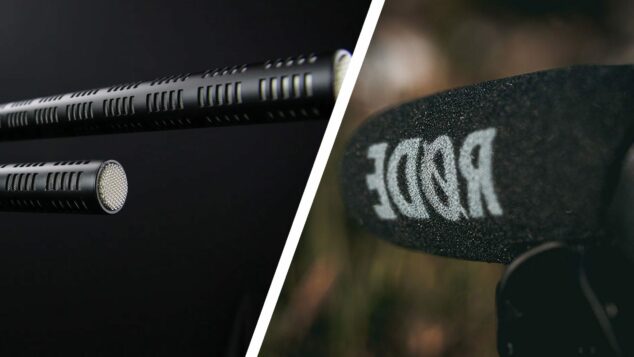 anemptytextlline
anemptytextlline -
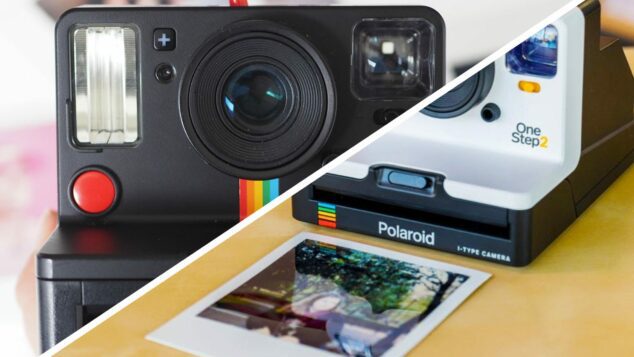 anemptytextlline
anemptytextlline -
 anemptytextlline
anemptytextlline -
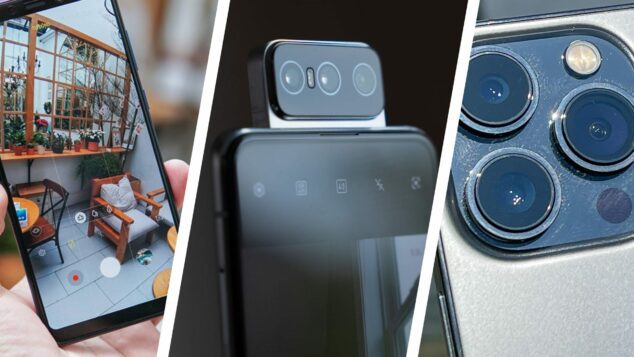 anemptytextlline
anemptytextlline -
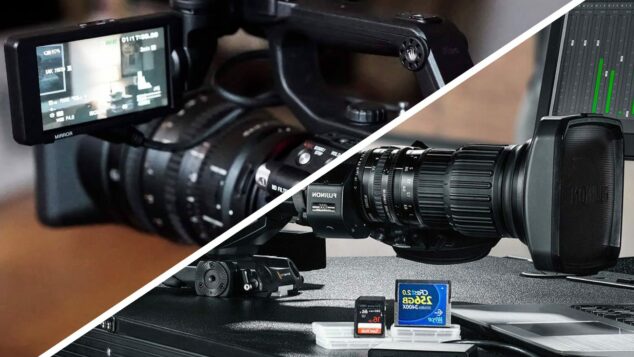 anemptytextlline
anemptytextlline -
 anemptytextlline
anemptytextlline -
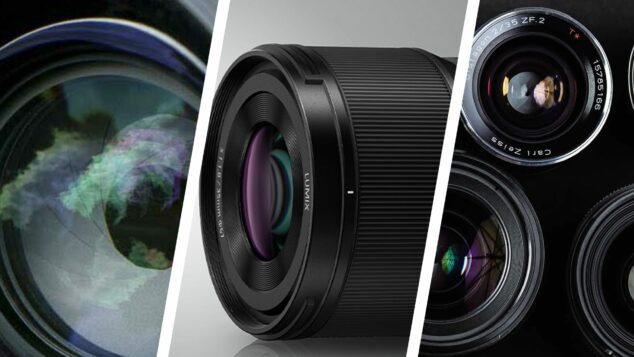 anemptytextlline
anemptytextlline




